#pius ii
Note
which president met the most popes-john paul 2?
Yes, it's Pope John Paul II.
The first incumbent President to meet a Pope was Woodrow Wilson, who met Pope Benedict XV at the Vatican in 1919, so Presidents have really only been meeting with Popes for the past 100 years. So Pope John Paul II basically reigned as Pope for a quarter of the time (26+ years) that Presidents have been meeting with them.
But despite the length of John Paul II's reign, he didn't meet with significantly more Presidents than some of the other Popes. John Paul II met with five incumbent Presidents during his reign: Jimmy Carter, Ronald Reagan, George H.W. Bush, Bill Clinton, and George W. Bush (he also met future President Joe Biden when Biden was a U.S. Senator). Pope Paul VI, who was Pope from 1963-1978, met with four incumbent Presidents: John F. Kennedy, Lyndon B. Johnson, Richard Nixon, and Gerald Ford. John Paul II would have probably met more Presidents if not for the fact that Reagan and Clinton were both re-elected and served the full eight years in office (Bush 43 was also re-elected, but John Paul II died just a few months into his second term).
Here's a full list of which incumbent Presidents met with which Popes:
•Pope Benedict XV [1]: Woodrow Wilson (1919)
•Pope John XXIII [1]: Dwight D. Eisenhower (1959)
•Pope Paul VI [4]: John F. Kennedy (1963); Lyndon B. Johnson (1965 & 1967--a meeting which featured one of my favorite Presidential stories ever); Richard Nixon (1969 & 1970); Gerald Ford (1975)
•Pope John Paul II [5]: Jimmy Carter (1979 & 1980); Ronald Reagan (1982, 1984, & 1987); George H.W. Bush (1989 & 1991); Bill Clinton (1993, 1994, 1995, & 1999); George W. Bush (2001, 2002, & 2004)
[John Paul II also met future Presidents George H.W. Bush during Bush's Vice Presidency and Joe Biden while Biden was a Senator.]
•Pope Benedict XVI [2]: George W. Bush (2007 & 2008); Barack Obama (2009)
[Benedict XVI also met future President Joe Biden during his Vice Presidency.]
•Pope Francis [3]: Barack Obama (2014 & 2015); Donald Trump (2017); Joe Biden (2021)
[Francis also met future President Biden on three occasions during Biden's Vice Presidency.]
Interestingly, Pope Pius IX, who reigned from 1846-1878 -- long before the United States formally established permanent diplomatic relations with the Holy See -- also met four Presidents during his reign (more than any Pope other than John Paul II), but they were all either former or future Presidents. Pius IX met former Presidents Martin Van Buren and Millard Fillmore in 1855 when they visited Rome (separately) and former President Franklin Pierce when he visited Rome in November 1857. And Pius IX met future President Theodore Roosevelt in December 1869 when Roosevelt's family visited the Vatican. Theodore Roosevelt is actually the only person who served as President known to have kissed the ring of a Pope -- even though Roosevelt wasn't Catholic and was only 11 years old. Former President Ulysses S. Grant met Pope Leo XIII in 1878 when visiting the Vatican during his post-Presidential world tour.
#History#Presidents#Popes#Popes and Presidents#Meetings Between Presidents and Popes#Pope John Paul II#Pope Paul VI#Pope Pius IX#Presidency#Papacy#Presidential History#Papal History#Vatican#Presidential Meetings#Papal Audiences
12 notes
·
View notes
Text

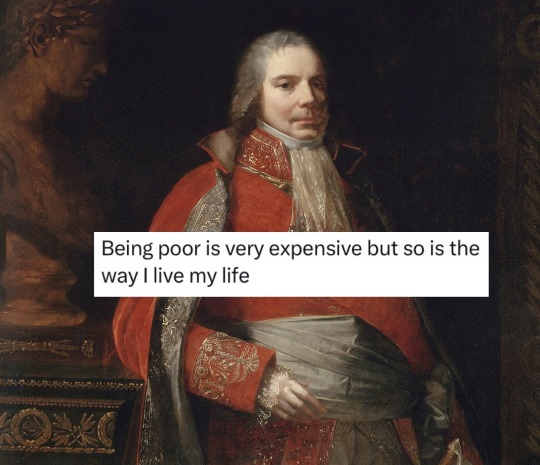

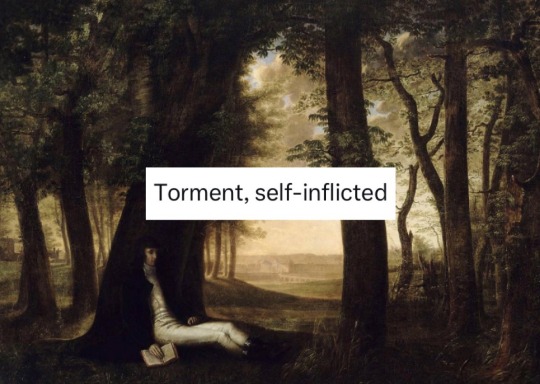



Napoleonic figures + random internet comments
In order: Napoleon, Talleyrand, Josephine, Lucien Bonaparte, Francis II, Pope Pius VII, Benjamin Constant
#my fav pic of Nap#this is so fun!#I shall make more#Napoleon#Talleyrand#Josephine#Lucien Bonaparte#Francis ii#pope pius vii#Benjamin constant#text post memes#history memes#Napoelonic memes#napoleonic era#napoleonic#19th century#first french empire#French empire#France#frev#napoleon bonaparte#French Revolution#history#my memes#Napoleon memes#josephine bonaparte#empress josephine#Habsburg#Austria#Rome
60 notes
·
View notes
Text
About the popes: Leo XIII, Pius X, Benedict XV, Pius XI, Pius XII, John XXIII, Paul VI, John Paul I, John Paul II
this may or may not inspire a pope tournament one of these days
#catholic#catholicism#popes#vatican#pope#pope john paul ii#pope john paul i#pope paul vi#pope john xxiii#pope pius x ii#pope pius xi#pope pius x#pope benedict xv#pope leo xiii
16 notes
·
View notes
Text
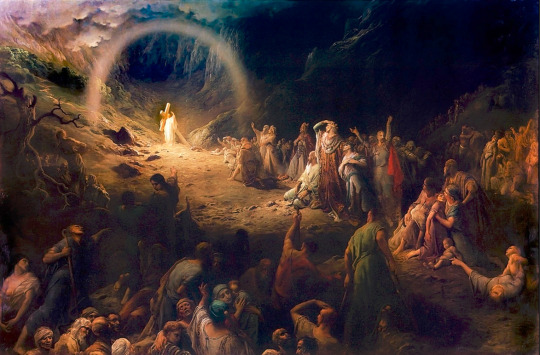
La Vallée de Larmes, oil painting by Gustave Doré, 1883.
Taking pity the human race, condemned by the fault of the first parent, He -the Splendor of the Father's glory, the Image of the substance of God, the Ruler of the world, the Judge of the future age- came down to us from the heavenly citadel and the high throne of God to save us.
- Pope Pius II, Cum bellum hodie (2.4.8), trans. Michael von Cotta-Schönberg. Original Latin below.
Misertus humani generis, primi parentis culpa jam pridem damnati, ut nos redimeret, ex arce caelesti et altissimo Dei throno, splendor paternae gloriae, figura substantiae Dei, moderator orbis, judex futuri saeculi, ad nos descendit[.]
#Jesus Christ#Logos#Incarnation#redemption#Christianity#Catholicism#Via Crucis#Stations of the Cross#Pope Pius II#Good Friday#Latin#Light of the World
25 notes
·
View notes
Text

The Papal funeral of Pope St. Pius X.
#traditional catholicism#traditional catholic images#pre vatican ii council catholism#pre vatican ii council images#traditional catholic saint popes#pope st. pius x#papal funerals
23 notes
·
View notes
Text
“It was in this climate that Leo XIII and Pius IX condemned freedom of conscience regarding religion. What they were condemning was the corollary notion to the idea that there was no absolute truth apart from the human will or the absolutely fixed evolutionary laws present in nature. This idea was called “indifferentism” because it taught that all religions that encouraged dependence on some sort of impersonal God and philanthropy to others were equally true. Truth in religion was indifferent. The Syllabus of Errors condemned religious freedom in this context but not in the context taught by Vatican II which is freedom of will in embracing the faith.
Other popes later spoke in the same terms. Pius XII taught tolerance in the light of the totalitarian experience of Fascism and Communism where the State was all. John XXIII affirmed the rights of a correct conscience. This was therefore a homogenous development of the principles which first of all stated that the person had a duty in conscience to seek the one, true faith. By the same token, the person had a right of freedom from coercion of the will in embracing religious truth. In Dignitatis Humanae, freedom of conscience regarding religion is based on two things. One is the dignity of the human person, who has the right to freedom from coercion by the State in embracing the faith in order to come to the truth freely motivated by a judgment of his intellect. This right affirms the freedom of will necessary for the act of faith The other is the incompetence of the State to rule in matters which regard truths of the supernatural order which transcend this world. God may bind the conscience to religious truths through authorities in this world, but this is not done through the civil order, but through Christ’s Church.”
- Fr. Brian Mullady OP, Christian Social Order
#Catholic#Christianity#quotes#Vatican II#Pope Leo XIII#Pope Pius IX#Fr. Brian Mullady#Christian Social Order#104
10 notes
·
View notes
Text
FEDERICO II DI SVEVIA: IL PIU' GRANDE IMPERATORE D'EUROPA
a cura di Italia Unita
22 novembre 1220: Federico II diventa Imperatore del Sacro Romano Impero.
Federico apparteneva alla nobile famiglia sveva degli Hohenstaufen. Discendeva per parte di madre dai normanni di Altavilla (Hauteville in francese) conquistatori di Sicilia e fondatori del Regno di Sicilia.
Conosciuto con gli appellativi stupor mundi (stupore del mondo) Federico II era dotato di…
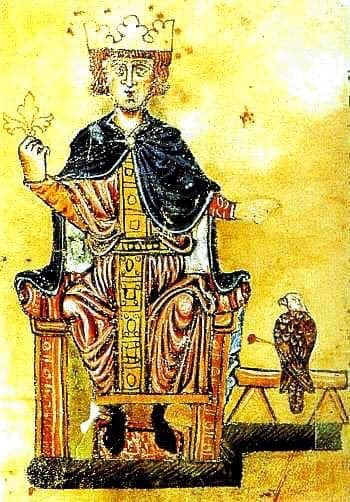
View On WordPress
0 notes
Text
Vatican II's Unitatis Redintegratio n. 3:
"[I]t remains true that all who have been justified by faith in Baptism are members of Christ's body,(21) and have a right to be called Christian, and so are correctly accepted as brothers by the children of the Catholic Church."
VS
Pope Pius XII, Mystici Corporis, n. 22:
"Actually only those are to be included as members of the Church who have been baptized and profess the true faith, and who have not been so unfortunate as to separate themselves from the unity of the Body, or been excluded by legitimate authority for grave faults committed. “For in one spirit” says the Apostle, “were we all baptized into one Body, whether Jews or Gentiles, whether bond or free.” 17 As therefore in the true Christian community there is only one Body, one Spirit, one Lord, and one Baptism, so there can be only one faith. 18 And therefore if a man refuse to hear the Church let him be considered — so the Lord commands — as a heathen and a publican. 19 It follows that those are divided in faith or government cannot be living in the unity of such a Body, nor can they be living the life of its one Divine Spirit."
#ecumenism#body of christ#catholic church#mystici corporis#pope pius xii#vatican II#unitatis redintegratio
0 notes
Text
Notes Towards A Theology of Art
Notes Towards A Theology of Art
“If the artist can perceive a ray of the supreme beauty among the many manifestations of the beautiful, then art becomes a way to God.”
Saint Adam Chmielowski – Opuszczona plebania (detail) – public domain
The Purpose of Art
Why does the human person create? Why does the artist make art? On the surface, art seems unnecessary. It is not needed to feed us, or clothe us, or house us, perhaps that…

View On WordPress
0 notes
Text
Oblomov’s Goncharov: The Novel That Started It All
To understand Martin Scorsese’s presentation of “Goncharov” (1973) it is first necessary to understand Oblomov’s original novel on which it is based, and indeed, the time in which it was written.

The author, Ilya Ilyich Oblomov, was a young nobleman who lived in the late 19th century in Moscow. Popular with the royal family and rich beyond all measure, he was targeted along with the royals by Lenin and the Bolsheviks when they took over Russia after the first world war (known then as World War Part I of II). To escape the fate of the royals (he is believed to have escaped the Winter Palace by only hours) he fled to Italy.
Italy was, at the time, a newly unified country of former city-states including Rome, Florence, Milan, and for some reason, Chicago, IL, the people of which may have thought “IL” stood for Italy at the time. Oblomov himself found protection in Vatican City (which was not a city, but a separate country) owing to his significant contributions to the Popesidential campaign of Pius XII. Once the revolution had died down in his former country, now part of the USSR, which is English for CCCP, which is Cyrillic for SSSR, which stood for USSR, Oblomov moved out into the “Country” (which was not a country, but just an Italian city) and began writing of his experiences.
Oblomov began his novel, Goncharov, in 1921. Its narrative was to be an epic escape from Russia to match his own, but this was not to be, as the house he moved into belonged to the family of Francesco Cuccia, known now as “Don Ciccio the All-Around Unpleasant” or “Cuccia the Pretty Damn Bloodthirsty.” Oblomov, having been tricked by certain vindictive members of the Vatican House of Commons, did not in fact have permission to live there.
As Oblomov himself tried to evade not only Don Ciccio’s mafia but Lenin’s assassins, Vatican intrigue, Templar knights trying to kill the Assassins, and of course, the order of assassins themselves, known then as “hidden ones” or simply, The Brotherhood; his novel Goncharov became a venting point for the tribulations to which he was subjected. Thus, Goncharov became the story of an epic battle between the Italian Mafia and Russians that we know today.
The novel Goncharov, published illegally in Soviet Russia as “Ivan Goncharov” or “The Many Sufferings Of Ivan Goncharov: Hope For The Best, Expect The Worst” was an underground hit. Stalin himself is said to have greatly enjoyed the novel before banning it, burning most copies of it, kidnapping its author and sending him to die in a gulag in Siberia. Though no record exists of Oblomov’s death, it does seem he was captured by Soviet secret police while visiting his parakeet in Yekaterinburg, and all record of him is lost upon his arrival in northern Siberia.
But a few copies made it out, and thanks to an English translation by Penguin Classics, the book fell into the hands of Martin Scorsese, who read the novel while in prep for his film Mean Streets, where he would go on to meet producer Domenico Procacci. Scorsese was of course too busy with his first New York epic to direct, but he agreed to co-produce the film. All that was missing was a director.
While filming the riot scene for Mean Streets though, Scorsese and his casting director happened to meet a certain extra with a peculiar name. Matteo JWHJ0715 (whose family name was changed at Ellis Island from “Jones”) had just moved to New York to achieve his dreams of Hollywood stardom, having thought Hollywood was one of New York’s suburbs. Scorsese corrected him and allayed his disappointment by inviting him to join him and Procacci for dinner.
The rest, as they say, is history.
3K notes
·
View notes
Text











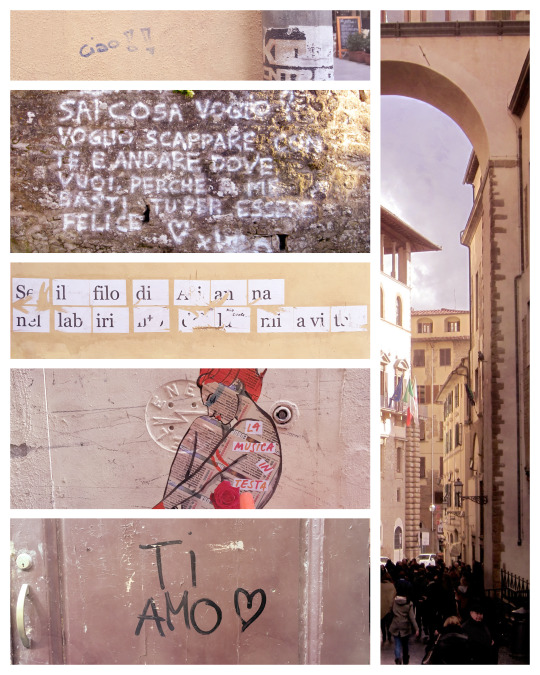
The City Loves You 🌹♥️
transcriptions/translations below cut
Florence I
What is the urban prophecy? / Tomorrow could be worse / love is in the air... / Life needs color. / Just kiss him.
Rome I
fear is a liar/ fall in love/ be good in life / remember me / in love with Rome / ... / Wish you were here.
Portland, Maine I
Rules to success: / You can't sleep over / Be kind to someone tonight / Love yourself better than anyone else! / Act as if you are one step ahead of the Devil himself / For all the ones who've left there are a few who stayed / I love you!
Breakup letter from Sevilla
You ruined my life / hoe <3
Prague I
Be brave and go see the world. / See art in all you see / till Shiva stops dancing. / I will be sad to leave, it's been a privilege. / Still go.
Florence II
Love is in the air... no wonder we have / smog / I'm dying
Rome II
Ciao fragolina! / Di chi ti ricordi per sorridere? Di te mi ricordo! /Non esiste al mondo un’altra donna che ti può sostituire. / Ogni giorno di piu ti amo. / Forse sei tu la volta che non sbaglio più.
[Hi little strawberry! / Who do you remember to make you smile? I remember you! / There’s no other woman in the world who can replace you. / I love you more every day. / Maybe you’re the one time I’m not wrong.]
Rome III
Pensa poetico / ti amo / ti amo / ti amo
[Think poetic / I love you / I love you / I love you]
Rome IV
Voglio torna / Aprite tutte le porte con puro amor / ovunque io sarò raggiungerò i tuoi passi / ancora / sempre.
[I want to come back / Open the doors with pure love / wherever I will be I will rejoin your footsteps / again / forever]
Rome V
Non mi salverai / ma io voglio te / Non tornerò / ma io voglio ancora te
[You won’t save me / but I want you / I won’t come back / but I still want you]
Florence III
Oh what we could be if we stopped carrying the remains of who we were / Who are you without your accomplishments? / Nothing / Look inside us; we are empty / 9am alone butt [sic] happy / In the dust we trust
Florence V
Ciao!! / Sai cosa voglio? Voglio scappare con te e andare dove vuoi, perche a me basti tu per essere felice / Sei il filo di Arianna nel labirinto della mia vita / la musica in testa / Ti amo
[Hi!! / You know what I want? I want to run away with you and go wherever you want, because you are all I need to be happy / You are Ariadne’s thread in the labyrinth of my life / music in the head / I love you]
#sentimental about street art again. and constantly.#some of my favorite tclys#the city loves you#tcly
127 notes
·
View notes
Text
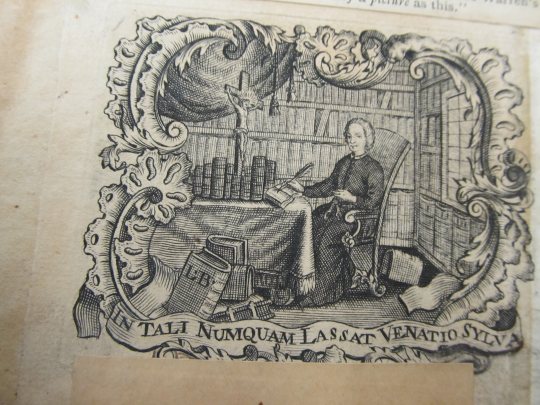
Winter storms are on their way across the Midwest, so make sure you're as stocked up with reading material as Louis Bosch, Curé of Tamise! He's shown here with his library in his very own custom-engraved bookplate from around 1750. It's affixed to the copy of Pius II's Epistolae familiares that is now part of our incunable collection.
Stay warm and safe!
#bookplates#bookhistory#libraries#books & libraries#rare books#books#books and reading#bookworm#special collections#university of missouri#mizzou
97 notes
·
View notes
Text

THURSDAY HERO:
Odoardo Focherini
Odoardo Focherini was an Italian journalist and devout Catholic who rescued 105 Jews between 1942 and 1944 by obtaining false identity papers for them and transporting them to safety in Switzerland. He was posthumously beatified by Pope Benedict XVI.
Odoardo, known as “Odo,” was born in Modena, Italy in 1907 to a devout Catholic family. At a vacation in Trento in 1925, he met Maria Marchesi, and they fell in love and soon became engaged. Odo was 18 and Maria was 16, so they waited until 1930 to get married. They had seven children.
Odo worked as an insurance agent, but in 1933 he followed his passion and started a new career as a journalist. He became managing director of L’Avvenire d’Italia, a daily newspaper affiliated with the Catholic Church that is still being published today. Odo was such an exceptional journalist that he came to the attention of the highest levels of the Catholic Church, and Pope Pius XI awarded him the Order of Saint Sylvester in 1937.
The situation in Europe grew increasingly darker for the Jews and in 1942, Hitler enacted the genocidal “Final Solution.” Cardinal Pietro Boetta, the archbishop of Genoa, asked the editor-in-chief of L’Avvenire d’Italia, Raimondo Manzini, to help a group of Polish Jews escape from fascist-ruled Italy to safety in Switzerland. Manzini immediately recruited Odo, known for his strong moral compass and devotion to justice, to carry out this lifesaving mission. Odo created a secret network of Catholics who wanted to help persecuted Jews as the Nazi death machine took over Europe. Using contacts he’d met during his work as a journalist, Odo procured a large number of false documents and personally accompanied many Jews over the border to Switzerland. Odo saved the lives of 105 Jews between 1942 and 1944.
Unfortunately, the Nazis found out what Odo was doing when they intercepted a letter in which he wrote that he was helping Jews “not for profit but out of pure Christian charity.” He was arrested by the Gestapo on March 11, 1944 and imprisoned in Bologna. That August Odo was transferred to a work camp in Germany. During his imprisonment Odo sent 166 letters to his beloved wife Maria. Later that year Odo was sent to a concentration camp in Hersbruck, Germany. He developed a leg infection which wasn’t treated and became gangrenous. On December 27, 1944, Odo died from the raging infection. His last words were, “I declare that I die in the purest Roman Catholic faith and in full submission to the will of God.”
Odo was posthumously awarded the title of Righteous Among the Nations by Israeli Holocaust Memorial Yad Vashem in 1969. In 1996, Pope John Paul II declared Odo a “Servant of God,” because he was murdered for saving Jews. This began the lengthy beatification process, and in 2012, the decree attesting to Focherini’s martyrdom was finally signed by Pope Benedict XVI. Odoardo Focherini was the first Righteous Gentile to be beatified. Odo’s letters to his family were published as a book in 1994. The Memorial Museum in Carpi displays a large banner with a quotation from Odo that he said to his brother-in-law who visited him in prison: “If you had seen, as I have seen in this prison, how Jews are treated here, your only regrets would be not to have saved more of them.”
For saving 105 Jews, at the cost of his own life, we honor Odoardo Focherini as this week’s Thursday Hero.
77 notes
·
View notes
Note
Pope John XXIII
Pope JP2
Pope Paul VI
Pope Pius X
oh oh oh oh getting some popes all up in here!!!
I have some OPINIONS about these men! I love John XXIII, thank you for bringing us Vatican 2, my man.
Pope JP2, I like you, I do, but your Theology of the Body really needed more work.
Pope Paul VI, I also like you very much, but I feel you could have listened better at the sessions during the latter half of Vatican 2.
Pope Pius X, I don't know much about you and I'm sorry there are weird sedevacantists who founded a society in your name and continue being weird.
anyway, new saints for our list! everyone will probably need another nomination to make it to the modern bracket!
#pope john xxiii#pope john paul ii#pope paul vi#pope pius x#catholic#catholic popes#catholicism#catholic saint tournament
2 notes
·
View notes
Text
Ummm.... today I learned that, before he was an ordained priest, Pope Pius II was an erotica writer???
13 notes
·
View notes
Text
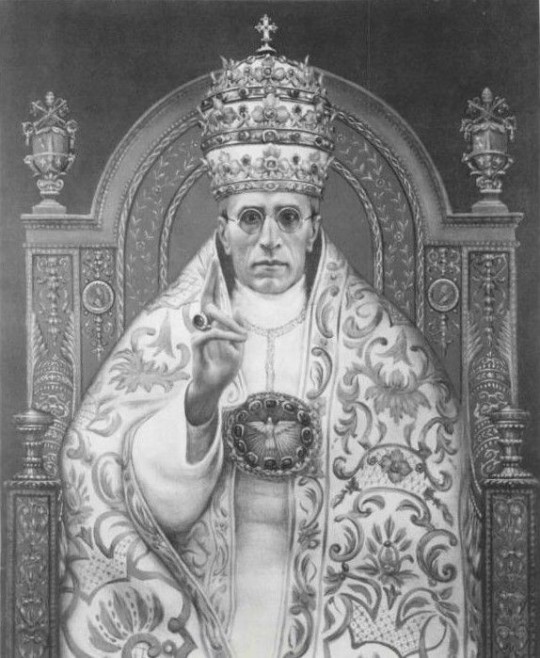
A excellent drawing of Pope Pius XII.
#traditional catholicism#traditional catholic images#traditional catholic modern art#traditional catholic popes#pope pius xii#pre vatican ii council catholism#pre vatican ii council images
8 notes
·
View notes